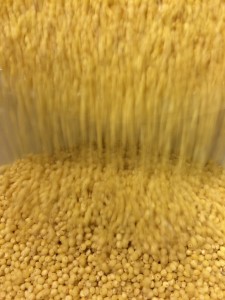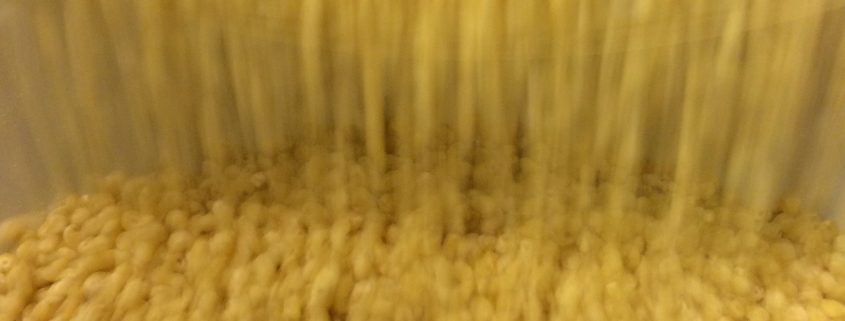July Monthly Morsels
Millet Mania
By Charna Sheinfeld, Nutrition Intern
 Millet has been long overlooked as an edible grain because of its association with being food for birds. However, it has seen a resurgence in the last few years. This is in part because it falls into the now trendy “ancient grain category”, which is one of the top 20 food trends for 2014 and 2015 according to restaurant.org.
Millet has been long overlooked as an edible grain because of its association with being food for birds. However, it has seen a resurgence in the last few years. This is in part because it falls into the now trendy “ancient grain category”, which is one of the top 20 food trends for 2014 and 2015 according to restaurant.org.
Millet makes a great addition to any meal as a healthy whole grain substitute for rice with its gently sweet and slightly nutty flavor. It also can be used in porridges, pilafs, and even granola bars.
Although it is currently a trendy healthy food, millet actually dates very far back to the Neolithic Era. Millet was a staple food in Africa and China, where it grew well due to the dry climates. Its popularity slowly spread throughout the rest of Europe and Asia where it is still a staple grain in one third of the world’s population. In areas such as India and Ethiopia, ground millet is used as the base for their breads, while in areas of Eastern Africa, millet is even fermented to make beer and other fermented drinks!
Millet is an excellent source of vegetarian protein, providing 3 grams of protein in a serving of ½ cup of cooked millet. Millet also contains an abundance of vitamins, minerals, and fiber. It contains high amounts of magnesium which is integral for the maintenance of muscle and nerve function as well as several B vitamins which aid in energy metabolism, enzyme activity, and nervous system regulation.
Millet can also play a significant role in preventing the development of chronic disease because it contains high doses of phenols and antioxidants that combat oxidative stress and other damage caused by free radicals. As a member of the whole grain family, new research shows that consumption of millet is linked to lowering risks of developing type 2 diabetes through its promotion of balanced blood sugars.
There are many ways to experiment with millet as it can be prepared in a variety of ways. It can imitate the fluffy, grainy texture of rice or the creaminess of porridge. Grind millet into a flour and use it to make muffins and breads or cook it to be made into patties or added to soups and salads.
Whether this is your first time hearing about millet, or you’re an old millet fan, I hope you will enjoy the two simple to prepare millet recipes provided.
Vegetable Curry Sauce over Millet
Creamy Millet with Blueberry Coulis


Good Content